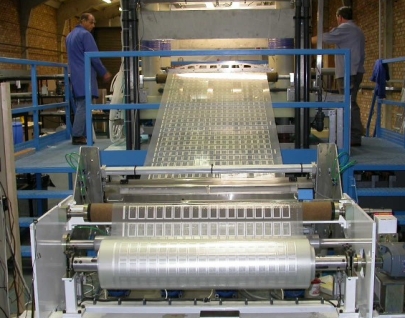Promising a significantly cheaper and faster antenna production process, U.K. flexible-circuit technology developer TDAO has announced its Focused Field Deposition (FFD) method for manufacturing antennas for RFID tags.
According to the company, FFD is an ultrafast dynamic additive process designed to produce flexible circuitry using electrodeposited copper extracted from copper sulfate solution. Because copper is deposited on substrate only where necessary and only in the amount needed, the company claims its process promises to significantly lower the cost of producing RFID antennas—undercutting existing printed and etched antenna production costs.
“We want to enable the ultralow-cost RFID tag marketplace. Using FFD, a typical UHF squiggle antenna, for example, could be made at a cost to the manufacturer of just two-tenths of a cent,” says Allan Goodman, chairman of TDAO, which is based in Market Harborough.
While etched antennas make up the bulk of the world’s RFID antennas currently produced, the subtractive nature of the etching process, which requires copper and aluminum to be scraped away to form an antenna, is costly. Etched antennas are expected to be replaced by less expensive printed antennas using a range of new conductive inks. However, TDAO maintains its FFD technology will be significantly cheaper than both etched and printed antennas using existing conductive inks.
“No printed ink, whether sintered or just cured, has the density or conductivity of electrodeposited copper. Using all these proprietary inks with tiny bits of powdered metal is a false economy. Micron for micron, these processes are all far more expensive than TDAO’s FFD,” says Goodman, comparing the cost of conductive ink to that of copper drawn from copper sulfate solution.
Since being formed in 1996, TDAO has been working on the technology used in the FFD process and says it has recently operated its reel-to-reel 1-meter-wide-web prototype machine at faster than 20 meters per minute. At this speed on its new commercial machine, TDAO’s capacity toward the end of 2005 will be several billion HF (13.56 MHz) and UHF antennas.
By next year, the company says it could potentially expand its system to two modular 1.6-meter-wide lines that could each run at 100 meters (330 feet) per minute—one devoted to HF antennas, the other to UHF. TDAO’s system will have a capacity of 140 million square meters annually, enough to produce 85 billion typical UHF squiggle tags, for example.
TDAO says it is now looking to see its FDD process used commercially, either by itself or by licensing it to larger, established label and tag manufacturing companies.
“The machine will be ready by the end of the year. We are negotiating with partners who will use the machines, or we can manufacture ourselves,” says Goodman.
In the past, TDAO had the backing of UPM-Kymmene, one of the world’s largest manufacturers of newsprint and magazine paper in the world, which held a majority stake in TDAO. But after the partnership ended in December last year, UPM says it now believes that a dynamic electroplating additive process can not provide a competitive or reliable enough technology for antenna production.
However, since its split from UPM in December 2004, TDAO says a key issue in its ultrahigh-speed electroplating process has been resolved through the use of new channel designs that can better deliver copper ions to the web. The new channel designs were originally developed in consultation with the Oxford Center for Industrial and Applied Mathematics at Oxford University. TDAO claims that, unlike other electrolytic processes, FFD requires only one side of the web to be exposed to the copper electrolyte.
The company maintains that the low cost of antennas produced using FFD could help boost item-level tagging using the 13.56 MHz spectrum. Although HF antennas made using FFD will still require more copper than UHF antennas, the difference in copper cost between HF and UHF antennas will be significantly lower compared with the cost difference of antennas made using subtractive technologies.
“On average 13.56 MHz coils will cost only 15 percent more than UHF antennas of the same area,” says Goodman.
Other companies are also working on ways to use electoplating to produce low-cost antennas for RFID tags. In March, Meco announced it had developed an antenna-making system that combines printing with plating (see Meco Uses Plating to Cut Antenna Cost).


